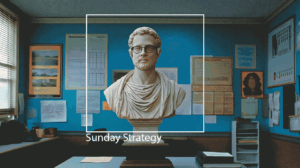Advances in technology and media mean that brands and advertisers are facing an unexpected consideration – being too truthful. Depending on your view of marketing, this may seem wildly incorrect, if you view advertising as lies peddled to sell, or wildly correct, if you believe as agency McCann famously does that ads are a ‘Truth well told’.
However, as data collection, algorithms and artificial intelligence get better and better about not just identifying but predicting consumer behaviour, those who market to them run the risk of sharing uncomfortable truths. Advertising has been described in simple terms by many as the ‘right message, at the right time, to the right person’, but even in this reductionist model – can we be too right?
The Age of the ‘Too Right’ Ad
What marketers know about consumers is increasingly more insightful than what they know about themselves or at least what they’re prepared to admit. While the times advertising has become too blunt or obtuse are legion, such as widely discussed Amazon display ads selling products consumers just purchased, we are increasingly entering an age where too smart eclipses too dumb.
Eric Schmidt, former CEO of Google, famously said in 2010 that the company’s ambition was to get ‘right up to the creepy line’ and not go over. Meaning with your permission, it could use data to infer your needs and behavior before you ask – becoming so predictive and useful it is creepy. Facebook has spent years debunking the ideathat they use phones with their apps installed to listen to people and serve them ads – most realistically because they don’t need to. We create enough signals in our browsing, searching and everyday lives that the creepy line has a well trodden path right up to it and beyond it.
Though, what was once was just creepy is increasingly become awkward or even painful, as we run the risk of showing people as they really are, violating the personally useful illusions or beliefs they use to live and construct a world view. Application of insight to shape behaviour subtly is a cornerstone of digital marketing and CRM, but what happens when the insight becomes more overt?
I’ve never been able to verify the famous 2012 example of Targetknowing a teenager was pregnant before her father did – but it doesn’t matter as we’ve already recreated this example many times in the 12 years since it was discussed. Predictive targeting is everyday media and despite consumer privacy attitudes or regulation such as GDPR, innovation is filling any emerging caps in this capability. AI’s ability to process large data sets and infer future behaviour from them is assuring marketers with the resource can have a greater insight into you than you do. Additionally, generative tools mean this insight can be activated and deployed faster than ever before, at a granular level – removing the production speed limit. The question for marketers has shifted long ago from ‘can this be stopped’ to ‘what does correct usage look like’?
Which Version of You Am I Selling To?
Correct usage has to start with an understanding of how we as humans see and handle the truth. First, we have to admit that we are unreliable narrators of our own lives and the world around us. IPSOS ‘Perils of Perception’ studies have highlighted that we misjudge almost every aspect of our lives, from what can harm us to immigration, climate change and our own lives.
Secondly, we have to acknowledge that truth is contextual. This isn’t to say that we are ‘post truth’, but that we recieve and react to truth based on who it comes from and how it’s delivered. Spotify’s ‘Wrapped’ campaign, using their listening data to show users what their last year looked like in music listening and UK bank Monzo’s ‘Year in Review’using spending data to show what users financial year looked like were incredibly similar in strategy and execution. However, responses were wildly different – with one being a source of genial sharing and the other often being the source of shame, outrage or disbelief. We’re happier to be told that we’re in the top 5% of Bad Bunny fans on earth more than we are to be in the top 5% of Greggs’ breakfast food buyers.
Finally, we have to understand how to chunk down larger, difficult truths to manageable levels. The effectiveness of fitness trackershas long been in part from their ability to nudge behaviour. Nudges to stand up or walk around for a moment allow behaviour changes without overwhelming as if it had asked you to take a fitness test or run a 10k the moment you put it on.
Working Within Types of Truths
As marketers increasingly have access to greater consumer truths, understanding where messages sit on a contextual scale of truth and how to deliver them effectively becomes more even more important. Campaigns explicitly leveraging consumer insights or truths do so in three general ways:
1.) A truth that challenges the target’s self or world view
This is the type of truth that will become more challenging in the coming years. As marketers we have always had the ability to challenge our audience – to make them aspire to be a better version of themselves. However, this type of truth comes at a cost. If we push too hard, we alienate those we want to motivate. If we tell truths that are too uncomfortable, we call into question the decisions our audience has made. Motivation can quickly become shame.
As AI allows consumers to understand the impact of their own choices, so will the risk they won’t be able to rationalize them away – as they sit more starkly in front of them. Fitness trackers don’t show you the body you could have had at the end of the year and financial management software doesn’t shame too heavily for bad decisions because the cost of investment to do so and the risk associated with taking that tone don’t add up. But as the technological cost diminishes, more marketers will have the ability to demonstrate hard truths in either targeting or media and have to consider the impact.
Instead, chunking larger, challenging truths into a series of smaller digestable ones continues to be a better alternative. As charity marketers have known for years, balancing the need for donations with the sheer shock of the unvarnished truth of that need – more marketers much make sure to break down truths that go over the line.
2.) A truth or insight that reinforces the target’s self or world view
Reinforcing how people already see themselves seems, generally, to be the least risky truth to tell. However, there are still threats for marketers to consider in the form of an aspirational self and the path it sets the brand on. Reinforcing how a consumer currently sees themselves may validate their present self, but can still be seen as too indulgent or avoidant of what they want to be.
Brands that focus on ‘moments of indulgence’ do so over championing a much more problematic ‘constant indulgence’. A crisis may destabilize these boundaries, such as when Kraft championed Mac & Cheese for breakfast during Covid, but in normal times they are more stringent, such as when a cereal CEO suggested their productas a dinner option. Fitness brands balance making fitness inclusive with still championing doing the aspiration of the action. Even when we tell truths that fit into an audience’s worldview, we must recognize that worldview isn’t static and we can’t be seen as providing too much impetus to stand still.
3.) A truth or insight that champions the target’s self or world view
Marketers know that truth can enact positive change, either through helping a consumer reach their aspirations or showing their truth to society. Championing the truth of an audience to the wider world is well worn territory for ads – from dispelling Millennial stereotypes to telling the truth about childhood.
However, even when truth can bring about positive change, we run the risk of championing it too aggressively and inspiring collective rejection of it in society. Just as marketers have to chunk larger truths down for individuals that challenge worldview, marketers have to also nudge wider society or culture along to the largest outcomes.
Remember the Truth is a Weapon in an Arms Race
To tell the truth has always been highlighted as something universally positive and while this still holds true there are caveats. Advertisers and marketers need to remember that not every truth is equal and we hold a responsibility to think about the context and impact of using the truths available to us. As an industry, we may fancy ourselves truth tellers – but as the tools to convey these become more powerful, so must the considerations on how they’re used.



